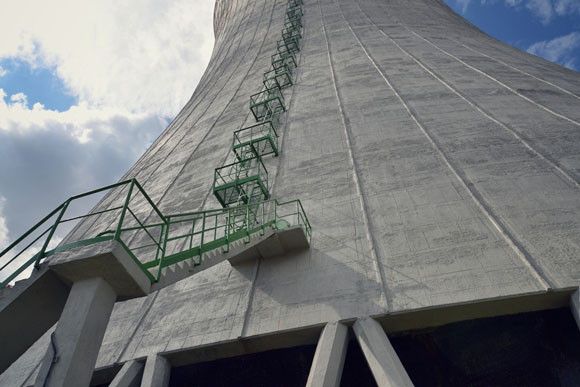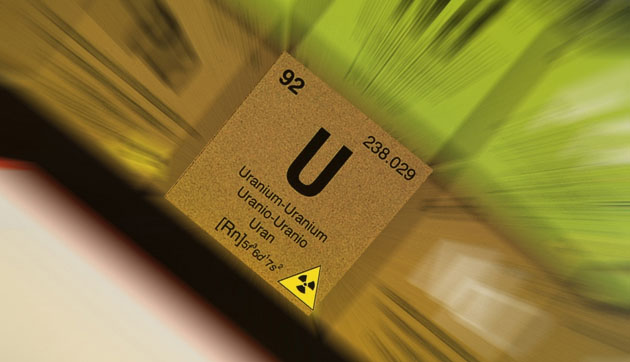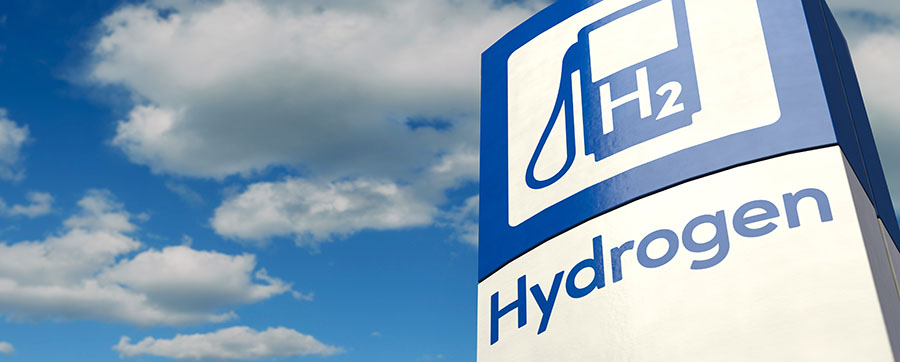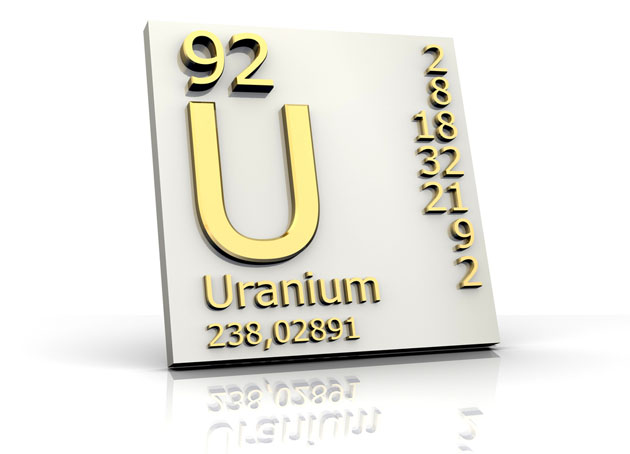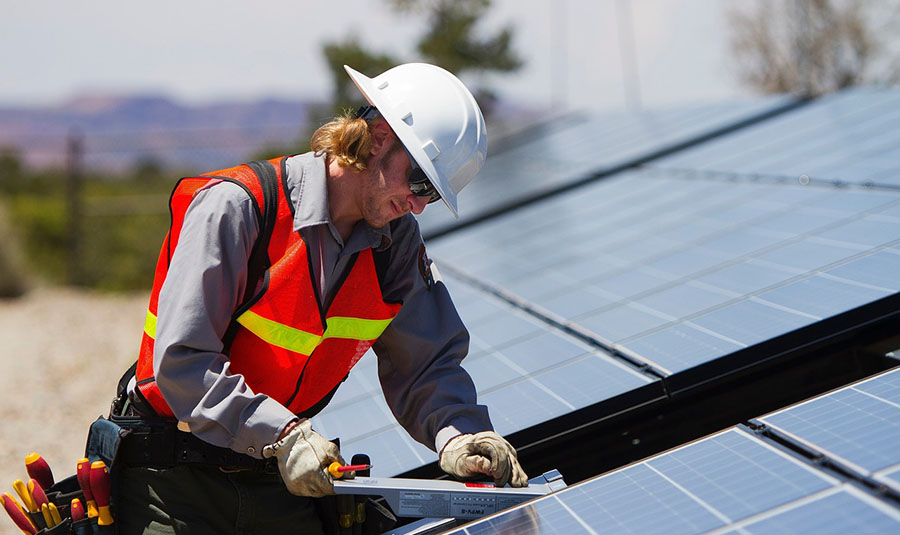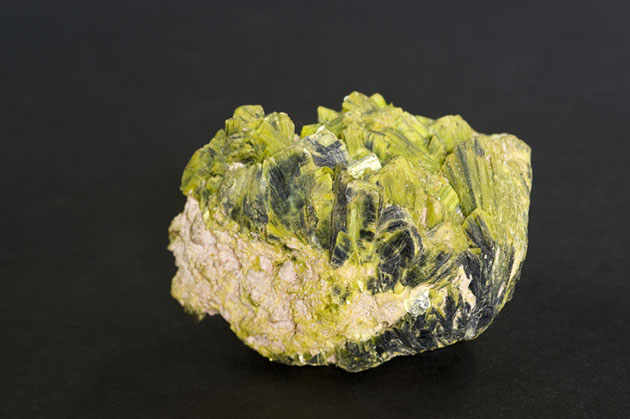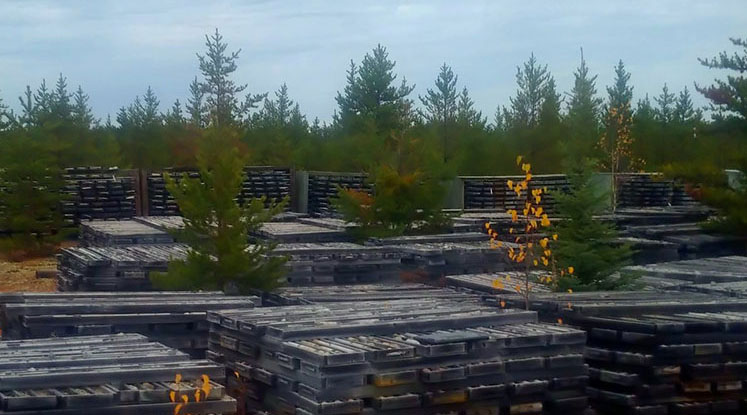The Energy Report: Let's start with a recent takeover deal that's been getting a lot of criticism in recent weeks. Freeport-McMoRan Copper & Gold Inc. (FCX:NYSE) made a $9 billion takeover offer for the oil and gas explorer McMoRan Exploration Co. (MMR:NYSE) and Houston-based Plains Exploration & Production (PXP:NYSE). Are you happy with this deal?
Byron King: It came as a surprise. I've held McMoRan Exploration in Energy & Scarcity for about two years. I like what McMoRan is working to do with deep gas in the Gulf of Mexico. Still, I recommended that readers take their money off the table with this deal. Sell the shares, take the cash and we'll find other opportunities.
McMoRan Exploration nearly doubled after the Freeport announcement, going from $8 to $15 per share. You can't walk away from that kind of potential gain. Take your money, pay your taxes at the lower 2012 rates and do something else with the money next year.
There's another angle to this takeover. Freeport and Plains together already own about 36% of McMoRan. There are a lot of ties here, between key individuals. I think this deal was driven by the impending tax changes next year. Freeport, the copper play, is borrowing a lot of money to fund this whole process. Fortunately, interest rates are very low, so it's borrowing cheap to do a big takeover, which will give a lot of people a really sweet payday, and they'll get to pay capital gains taxes at much lower rates this year than if they wait until January 2013.
TER: James "Jim Bob" Moffett, who founded McMoRan, is also paying himself. He was a significant shareholder in McMoRan Exploration. He's taking from his left pocket to put it in his right pocket.
BK: Wall Street hated this deal. Freeport's share price dropped by about $6/share within a few minutes of the deal being announced.
TER: This whole deal really hinges on the Davy Jones well offshore of Louisiana and whether or not it can make that play. Can it turn this around? Can it make it a viable, producing well?
BK: Davy Jones is all about using new, deep-drilling and production technology to make this type of well work in the Gulf of Mexico, albeit in shallow water—20 feet or so. Sad to say, the Davy Jones well isn't quite where it needs to be. But it's coming, and likely sooner than most people believe.
"I'm forecasting that oil prices are going to rise."
The components of the technology are all there, I'd say. I've seen super-strong well casing. I've seen advanced valve systems. I've seen blowout preventers that can handle the stresses. It's just that I have seen these things in vendors' offices and warehouses in Houston. Now the trick is to systematize it all, and make the Davy Jones concept work as a deep gas producer with economics that won't break the bank.
The next question is what's going to happen with natural gas prices in the U.S.? Whether it's Davy Jones or a new well, companies are drilling wells that need $6, $8 and $10 per thousand cubic feet (Mcf) gas. Yet, on a good day, gas is selling at $3–3.50/Mcf. Are the economics going to work? That's a whole other discussion.
TER: How does this change the landscape among the hard asset players? Are we returning to the 1970s, when mining companies and oil and gas companies were one and the same?
BK: Back in the 1970s, when oil prices went up and the economy realized that energy was a key component of everything, a lot of oil companies started to get into other resources. They did these types of rollups in the 1970s, and then they spent a big part of the 1980s divesting and spinning these things back out. Right now, in this era, McMoRan may be a one-off idea. It's a unique play. It's not quite time to break out your old 1970s leisure suits and hang the disco balls or anything.
TER: Let's get to what you're calling "taxageddon." How will this affect investors?
BK: When the tax code changes dramatically on Jan. 1, a lot of people are going to feel the sting. We'll get hit by that 2% increase in the FICA Social Security in every paycheck. The capital gains tax rates will effectively double on Jan. 1, including the Obamacare increase. The personal rates will go from 15% to the 30–35% range. It's a big hit.
TER: Are you managing the Outstanding Investments portfolio differently than you were a year ago? Are there more yield-bearing stocks in that portfolio?
BK: In the last year, I've focused more on identifying yield-bearing stocks. I added one this fall called Linn Energy LLC (LINE:NASDAQ).
TER: In recent editions of Energy & Scarcity, you have discussed declining rates at fracking wells across the U.S. Do you believe this is an across-the-board problem or is it limited to certain plays or geology?
BK: It's pretty much all of the shale gas wells. A fracked well that does not decline quickly is truly the exception. Last week, at a conference at the University of Texas, the overall decline rates that were tossed around were absolutely shocking. The decline rates on wells in their first year are in the range of 35–40%, and it is a similar number in the second year. By year two, a company will have produced perhaps 75% of the ultimate recoverable hydrocarbon out of a well.
It utterly wrecks the economics of a gas well to produce most of its output up front, during a low-price environment. These frack plays are astonishing wells, in a technical sense, but the economics are very problematic.
TER: If the production rates are rapidly declining and there is not as much natural gas as first thought, won't that ultimately lead to higher natural gas prices?
BK: Natural gas prices are already starting to climb back up. About a year ago, the number of rigs devoted to drilling for gas fell off a cliff. I am bullish on natural gas in general. The natural gas price could double to the $7 range within the year.
TER: One of the companies in your Outstanding Investments portfolio is Royal Dutch Shell Plc (RDS.A:NYSE; RDS.B:NYSE), which is moving heavily into natural gas. Is that a smart move?
BK: Royal Dutch Shell is moving to gas. Exxon Mobil Corp. (XOM:NYSE) is moving to gas. Chevron Corp. (CVX:NYSE) bought Chief Oil and Gas LLC in western Pennsylvania to establish itself as a major player in the Marcellus region. However, the executives from these companies will tell you about the very tight economics of these projects. Actually, Rex Tillerson of Exxon said that up until now, Exxon has been losing its shirt on these things.
"I am bullish on natural gas in general."
I'm not going to say that Royal Dutch Shell has done the wrong thing. It bears watching. These big companies have deep pockets, and will have to work their way through this storm the same as everyone else. The good news is that the big guys can afford to take risks that small companies, or even large independents, can't take to drill gas plays and test new technology that might change those decline rates from being so steep.
TER: What are some other senior oil and gas producers in the Outstanding Investments portfolio?
BK: Over the years, I've focused more on international names. Statoil ASA (STO:NYSE; STL:OSE) of Norway is a large, well-run company. I like that the Norwegian government has a large stake because it seems to be mature enough to let Statoil operate as an oil company, collect the dividends and benefits, but not interfere in the day-to-day operations. Statoil has wonderful technical capabilities. It's a nice dividend payer.
French company Total S.A. (TOT:NYSE) is also a large, global company that operates in a lot of jurisdictions that France has close ties with. It pays a nice dividend. Total has been good.
BP Plc (BP:NYSE; BP:LSE) has been in the portfolio for a while. I kept it through the Gulf of Mexico blowout. BP's shares dropped terribly right after the blowout, although I told people to buy back in at $28/share, and it wound up going up to the $40s.
Yet BP has been a very frustrating company for a lot of reasons. Of course, there is the Gulf of Mexico disaster, but it has other issues related to people's perception of its safety culture. Fair or not, people write books about it, like Drowning in Oil: BP and the Reckless Pursuit of Profit, by Loren Steffy of the Houston Chronicle. That hurts BP's share value.
Plus, BP hasn't done itself any favors with the confusion over its partnership with TNK-BP. I'm still thinking through what to do with BP. On the one hand, it has a lot of great people and assets. It has an aggressive aspect to its exploration and production in the future. On the other hand, there is informed speculation that BP could be worth more in a broken-up state. It's going to be interesting to see how BP evolves over time.
TER: Most natural gas is used to heat homes and to create electricity at large utilities. Could declining output from fracked natural gas wells ultimately be a boon to green energy sectors like solar, geothermal or wind?
BK: Cheap natural gas has completely altered the economics of the electric utility system in North America. Natural gas base rates are now considered the number to beat, even when people are proposing nuclear power. That's a very odd dichotomy because a natural gas well can be set up and generating electricity in a few years. With nuclear, it can be a 25-year process to acquire a site, get the permitting and navigate the maze of regulation and public acceptance for a reactor. What may be a temporary glut of natural gas is truly altering the long-term investment climate for nuclear power.
TER: Are you less bullish on uranium plays as a result?
BK: I'm bullish on uranium because there's not going to be enough new uranium mined and milled to meet demand. China has an aggressive plant-building program. Every one of those plants needs to lock down a 20- to 30-year supply early in the development cycle. There are not enough new mining plays coming on to supply that.
An entire level of uranium supply is also going to go away in a year. Russia is not renewing its agreement with the Megatons to Megawatts program, which purchased nuclear reactor fuel that had been converted from enriched uranium in old nuclear weapons.
TER: Are there any particular uranium plays that you're bullish on?
BK: Uranium Energy Corp. (UEC:NYSE.MKT) extracts uranium via in situ recovery, by washing the uranium out of sandstone using hydrogen peroxide in Texas. It is producing uranium yellowcake at an internal loaded cost of about $18–20/pound (lb), which sells into a spot market at $50/lb.
"These frack plays are astonishing wells, in a technical sense, but the economics are very problematic."
UEC's numbers are going up. It just had a brand new permitting approval at Goliad, Texas. It will be using a fairly simple technology, drilling wells that are less than 1,000 feet deep. It's pumping the fairly benign substance hydrogen peroxide, along with a few other odds and ends, into the sandstones. It is pulling it out with resins and taking it to a fully licensed plant at Hobson, outside of San Antonio.
I've visited the facility. It's all good: The people are good. The technology is good. The economics seem good. I like Uranium Energy as a long-term play. It will be very sensitive to rising uranium prices that I forecast in the next year or two.
TER: Any others?
BK: Over a longer time frame, there is a Canadian company operating in South America called U3O8 Corp. (UWE:TSX; OTCQX:UWEFF). U3O8 has very early-stage uranium deposits in Colombia, Guyana and Argentina. I've visited the Colombian play. It is polymetallic, which means that in the process of recovering the uranium, it is going to be able to pull out phosphate, silver and some intriguing quantities of rare earths. It's very early stage. It is still doing the drilling out in the jungle. It is a speculative play for long-term investors who know how to ride these junior resource markets.
TER: The green energy sector is in the midst of hard times. It's had more downs than ups during the past few years. How would you characterize alternative energies right now?
BK: The renewable energy space has been very frustrating for most investors. It's not to say that you can't produce energy using solar, wind or geothermal. Of course you can. But it gets back to that well-known critique about how, when the wind doesn't blow, you have no power. When the sun doesn't shine, you have no power. What's the answer?
Europe has a lot of wind and solar power. It creates so much power during windy and sunny times that it actually disrupts the fossil fuel baseload within Europe. Yet, for every windmill and solar field, Europe still needs fossil fuel backups to kick on if the alternative source goes down. This kind of overdevelopment of so-called renewables may feel good to the green side, but it has completely disrupted the economics of a lot of utilities across Europe. Many European utilities have ceased being investment-grade assets.
"What may be a temporary glut of natural gas is truly altering the long-term investment climate for nuclear power."
We haven't built renewables to that scale in the U.S. If we do, we would have a similar problem. Rapid overbuilding of green power will degrade the investment quality of many public utilities, which are among the few things that pension funds and institutions can still count on. It's something that investors need to keep an eye on. We blew up the stock market in 2008 with a housing meltdown. Do we want to risk blowing up the market again with a utility meltdown? We're not there yet, but we could be on that track.
The Holy Grail for renewable energy is backup battery storage that charges up batteries for continued use after the wind or sun dies down. I've been focusing on American Vanadium Corp. (AVC:TSX.V), which is developing a vanadium redox battery that's very intriguing and scalable. It's capable of storing immense amounts of electricity.
TER: They're only being used right now in Japan, right?
BK: The Japanese are leading the charge of commercializing it. The Chinese are close behind. In the U.S., it's the typical story of caution and underinvestment, relating to the problem of industry working with public utility commissions (PUCs). Will the PUCs of America build this new tech into the rate base?
Nobody wants to be the first one to approve a vanadium redox battery system for a public utility. People don't want to put their necks on the block. But I suspect that a lot of people would love to be the second players at bat. Unfortunately, we are very risk averse in the U.S., whereas Japan and China are charging ahead—if you'll excuse the pun. Looking ahead, if we crack the code on reliable, large-scale storage, it could truly alter the economics of alternative energies.
TER: If you were to speculate on which one of those renewable energy sectors will be the first one to be commercially viable, where would your money be?
BK: Solar panels are becoming less costly, which is improving the economics for use on a much larger scale. It will be geography dependent. The sunny Southwest and West regions ought to see solar penetration the soonest and in the greatest degree. The idea that there could be a solar-powered Boston or Minneapolis is probably not as realistic.
TER: One issue with solar is the lack of baseload power. That's a big advantage of geothermal over solar. However, if you want to talk about frustrated investors, look at geothermal energy.
BK: I started out Energy & Scarcity Investor with a number of geothermal ideas. I truly believed that these things were on the way up, but the technical problems and capital requirements have been absolutely overwhelming. The fact is that the largest geothermal power producer in the world is Chevron. It picked all that up when it bought Unocal. In 2005, Unocal had developed a lot of geothermal in Indonesia. A lot of green-power people hate it when I say that Chevron is the biggest geothermal player.
TER: Geothermal is working in Central America. Why isn't it happening in the U.S.?
BK: It's started to happen here in certain areas, such as Nevada. I drove by a geothermal facility on Interstate 80 when I was in Reno recently. Where it works, it works well. But it's getting it to work that's the hard part. The foremost reason is that there are few geologists and engineers who understand this space. It's tough to build a technical team and keep the lights on long enough to make it all work. It's been very frustrating.
"I'm bullish on uranium because there's not going to be enough new uranium mined and milled to meet demand."
Even more frustrating is that geothermal is struggling to spread in an environment that is supportive of renewable energy. California and Nevada state legislatures are telling the public utilities to have a certain percent of power coming from renewables by certain dates. The Obama administration and the Environmental Protection Agency are supportive at the regulatory level. There are tax benefits and low interest rates. Still, the geothermal space has not worked out.
TER: Have you stopped following geothermal companies?
BK: I haven't stopped. I just don't spend a lot of time on them. There are too many other ideas that offer a better return on investment.
TER: To conclude, what investable themes in energy should investors look for in 2013?
BK: In terms of oil and gas, people should look for surprises. I'm forecasting that oil prices are going to rise. There are conventional oil plays that still offer excellent returns to investors.
Natural gas prices are also going to drift up as the year goes on. The rapid depletion rates on fracked wells from the past two and three years are going to kick in, and probably with a vengeance.
There could be interesting breakthroughs in the alternative space. 2013 could be the year when investors start to better understand energy storage. This could be the year that the investing community is going to begin to realize it's out there and that could lead to the beginning of a rebound in the solar and energy storage spaces.
TER: Will we see a dramatic rise in uranium prices in 2013?
BK: I think the spot price will start to drift up late in the year. People are going to have a lot more on their plates to worry about in the first six months of the year. For some strange reason, a lot of investors have allowed their investment horizons to shorten up. What people ought to be worried about now is that at the end of 2013, there is going to be a big uranium shortage worldwide. It will happen. I don't think that it cannot happen.
Byron King writes for Agora Financial's Daily Resource Hunter. He edits two newsletters: Energy & Scarcity Investor and Outstanding Investments. He studied geology and graduated with honors from Harvard University, and holds advanced degrees from the University of Pittsburgh School of Law and the U.S. Naval War College. He has advised the U.S. Department of Defense on national energy policy.
Click here for a free copy of Bryon King's award-winning Outstanding Investments.
Want to read more exclusive Energy Report interviews like this? Sign up for our free e-newsletter, and you'll learn when new articles have been published. To see a list of recent interviews with industry analysts and commentators, visit our Streetwise Interviews page.
DISCLOSURE:
1) Brian Sylvester of The Energy Report conducted this interview. He personally and/or his family own shares of the following companies mentioned in this interview: None.
2) The following companies mentioned in the interview are sponsors of The Energy Report: Uranium Energy Corp., U3O8 Corp. and Royal Dutch Shell Plc. Streetwise Reports does not accept stock in exchange for services. Interviews are edited for clarity.
3) Byron King: I personally and/or my family own shares of the following companies mentioned in this interview: None. I personally and/or my family am paid by the following companies mentioned in this interview: None. I was not paid by Streetwise Reports for participating in this interview.



